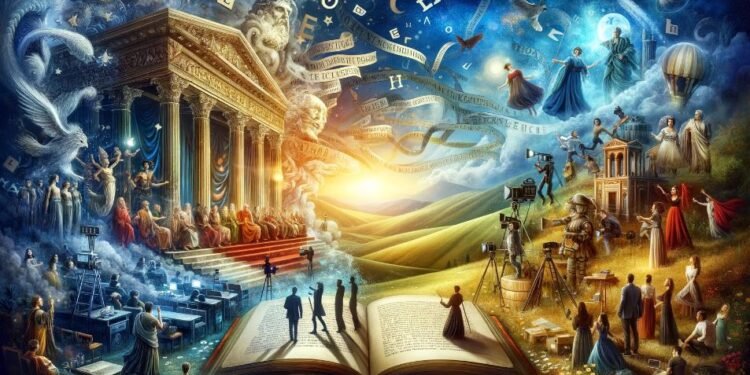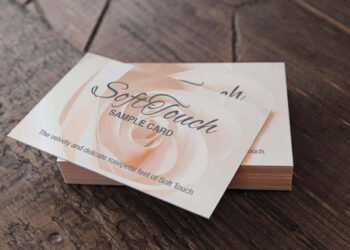Exposition is a fundamental component in literature, serving as the backbone for storytelling across various genres. It’s the art of delivering information to the audience, essential for setting the stage in a narrative. This article delves into the intricacies of exposition, examining its nature, significance, types, and methods while also providing illustrative examples from literature and film.
The Nature of Exposition
At its core, exposition is about conveying information. This information can range from background details about the setting and characters to historical context and thematic elements. It’s a tool for authors to provide the audience with the necessary understanding to grasp the narrative’s context. The balance in exposition is crucial; too little can confuse the audience, while too much can result in a sluggish history.
Historical Context of Exposition
Tracing the roots of exposition takes us back to ancient storytelling traditions. Early epics and plays often used a narrator or chorus to provide background information. For instance, the Greek tragedies frequently employed an ensemble to inform the audience about past events and character motivations. This method of exposition set the stage for the story’s action and helped viewers understand the unfolding drama.
Modern Evolution
In contemporary literature and cinema, exposition has evolved significantly. Modern storytellers have many techniques, from dialogue and narration to flashbacks and visual cues. The evolution reflects a more sophisticated audience that prefers subtlety and nuance over straightforward narration.
Significance of Exposition in Storytelling
Establishing the World
One of the primary functions of exposition is to establish the story’s world. It includes the physical setting, period, cultural backdrop, and societal norms. For example, in George Orwell’s “1984”, the exposition skillfully outlines a dystopian world governed by surveillance and strict rules, setting the tone for the entire narrative.
Character Development
Exposition is also crucial in character development. It provides insight into a character’s background, motivations, and personality. A well-crafted presentation can make characters relatable and their actions understandable, thus creating a deeper connection with the audience.
Advancing the Plot
Exposition can also drive the plot forward. By revealing critical information at strategic points, it can create suspense, foreshadow future events, or explain past actions. It keeps the audience engaged and the narrative dynamic.
Types and Methods of Exposition
Direct and Indirect Exposition
Direct exposition explicitly states information, often through a narrator or a character’s dialogue. Indirect commentary, on the other hand, subtly weaves information into the narrative through actions, thoughts, and environmental details.
Dialogue and Monologue
One standard method of exposition is through dialogue or monologue. Characters discussing events or feelings can reveal critical information about the plot or their personalities. For instance, in Shakespeare’s plays, monologues often provide deep insights into a character’s inner thoughts and motivations.
Description and Narration
Descriptive passages and narration are traditional tools for exposition. They can set the scene, describe a character, or provide historical context. In novels like J.R.R. Tolkien’s “The Lord of the Rings,” descriptive exposition creates a vivid and immersive world.
Flashbacks and Backstory
Flashbacks and backstories are potent methods for revealing a character’s past or events that shape the narrative. They allow the audience to witness crucial moments that have a bearing on the current storyline, adding depth and complexity to the report.
Show, Don’t Tell
“Show, don’t tell” is a guiding principle in modern storytelling. It advocates for revealing information through actions, sensory details, and dialogue rather than explicit exposition. This approach engages the audience more actively, allowing them to infer and imagine, making the narrative more immersive.
Exposition in Literature
Classic Literature
In classic literature, authors like Charles Dickens and Jane Austen used exposition to paint detailed portraits of society and characters. Dickens, in particular, was known for his extensive use of descriptive definition, which vividly brought Victorian England to life.
Contemporary Literature
Contemporary authors often employ more subtle forms of exposition. They rely on the reader’s intelligence, providing clues and hints rather than overt explanations. It can be seen in works like Margaret Atwood’s “The Handmaid’s Tale,” where Offred’s perspective gradually reveals the dystopian world.
Exposition in Film and Television
Visual Exposition
Film and television have the advantage of visual exposition. Settings, costumes, and actions can convey a wealth of information without a single line of dialogue. Movies like “Blade Runner” use graphic details to create a rich, futuristic world.
Expository Dialogue
Dialogue in films is often an essential vehicle for exposition. It needs to be well-crafted to feel natural while conveying necessary information. Aaron Sorkin, known for his work on “The West Wing” and “The Social Network,” is a master of expository dialogue that is both informative and engaging.
Voice-over Narration
Voice-over narration is another tool frequently used in film. It can provide quick background information or a character’s inner thoughts. Classic examples include the opening of “Star Wars” films, where the scrolling text sets up the story’s context.
Challenges and Pitfalls of Exposition
Exposition Dump
One major pitfall is the “exposition dump,” where much information is unloaded on the audience, often at the story’s beginning. It can be overwhelming and disengage the audience. Balancing exposition with action and dialogue is critical to avoiding this.
Maintaining Interest
Keeping the audience engaged while delivering exposition is a challenge. The information needs to be presented excitingly and relevant, ideally intertwined with the narrative’s action and emotional arcs.
Subtlety and Nuance
In modern storytelling, subtlety in exposition is often more effective than direct explanation. It requires skill to provide enough information for the audience to follow the story without spoon-feeding them.
Conclusion
Exposition, when executed skillfully, is an art form that enhances the depth and richness of a narrative. It’s a crucial element in storytelling, significantly establishing the setting, developing characters, and advancing the plot. The evolution of exposition reflects the evolving preferences of audiences and the creative innovations of storytellers. Whether in literature, film, or any other narrative form, mastering the art of exposition is essential for creating engaging, compelling, and memorable stories.
Also, Read Exploring the UBS Arena-A Modern Marvel in Sports and Entertainment.


















